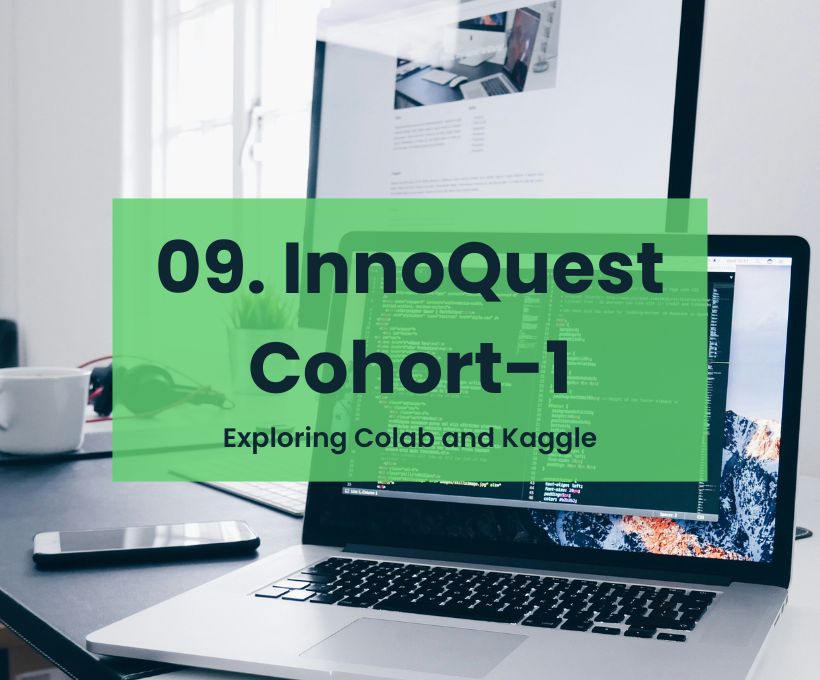The Innoquest Cohort-1 Class 9 session on Colab and Kaggle was a refreshing dive into practical machine learning. Guided by a tutor with a mix of teaching, research, and budding industry experience, this hands-on class offered a comprehensive overview of two essential platforms for machine learning enthusiasts: Google Colab and Kaggle.
Colab vs. Kaggle: A Brief Overview
The session began with an introduction to Google Colab and its features, followed by a quick transition to Kaggle. While I was already familiar with Kaggle’s datasets and notebook features, I gained insight into its broader functionality. Kaggle now stands out as my preferred platform for model building, thanks to its code suggestion feature that behaves like an integrated development environment (IDE). In contrast, Colab offers code completions but lacks real-time suggestions, which makes a significant difference in coding efficiency.
Hands-On Learning: From Data Preprocessing to Model Training
This was a practical session focused on real-world applications. We began with data preprocessing, loaded datasets from sources like OpenML and CSV files, and moved on to train multiple models, including:
- Linear Regression (Single, Multiple, Polynomial)
- Logistic Regression (Simple, Multinomial)
Each model was demonstrated step-by-step, offering insights into their usage and applicability. These exercises refreshed my understanding and helped reinforce practical skills.
Strengths of the Class
- Practical Approach: The tutor emphasized resource optimization, teaching us to avoid memory wastage by not duplicating datasets unnecessarily. This is a critical practice in large-scale machine-learning projects.
- New Insights: I appreciated the focus on Kaggle’s advanced features, which I plan to use extensively for future tasks, from data exploration to model deployment.
Constructive Feedback: Bridging Academia and Industry
While the session was insightful, I couldn’t help but compare it to my experience in the AI courses organized by Sir Irfan Malik, where industry practitioners led the sessions. Their daily project-building experience brought an unparalleled practical perspective.
One recurring issue in beginner-level courses, including this one, is the focus on simplified examples over industry best practices. For instance, using variable names like train_x, train_y instead of industry-standard naming conventions might seem trivial, but adhering to professional norms early on can shape better habits for aspiring machine learning engineers.
A Thought for the Future
Although beginner courses often prioritize simplicity over real-world applicability, integrating industry practices incrementally could make a significant difference. It’s essential to prepare students not only to understand concepts but also to transition seamlessly into professional environments.
Final Thoughts
Overall, this session was an engaging mix of learning and reflection. The tutor’s approach to teaching resource optimization and Kaggle’s robust features made the session worthwhile. The assignment we received promises to reinforce these learnings, and I’m excited to share my progress soon!
